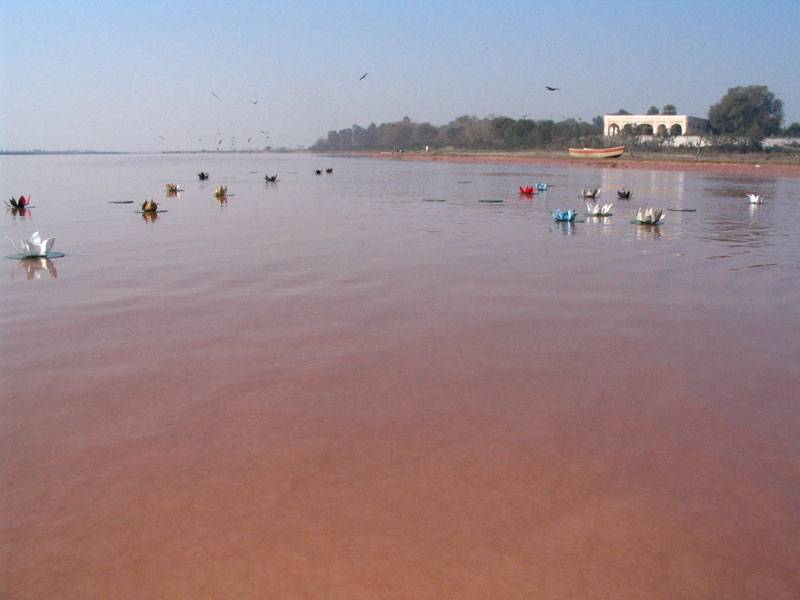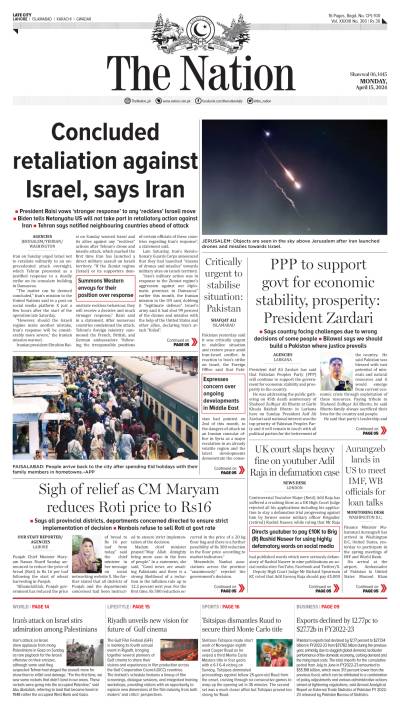LAHORE - Huge discharge of untreated domestic and industrial waste has turned River Ravi, the most important source for maintaining aquifer level in Lahore, into a dumping pit, causing serious health and environmental hazards, The Nation has learnt.
The entire municipal waste from Lahore is collected through a network of 14 main drains and discharged into the River Ravi without any treatment, increasing pollution level with every passing day. As many as 271 industrial units discharge their untreated waste into the canal system that ultimately ends up adding to the pollution of already heavily polluted River Ravi. These industries include textile, chemical, food processing, pulp and paper, poultry, dairy, plastic, paint, pesticides, leather, tanneries and pharmaceuticals.
Besides taking agricultural waste from India, Hudiara Drain is carrying hazardous waste from over 100 industrial units in Pakistan that also ends up into the River Ravi. Out of these 100 industrial units located along Hudiara Drain, 30-35 are high polluting textile processing units, carpet industries, tanneries, food processing units and dairies that are gradually increasing the metal contents in water of River Ravi. The quality of shallow groundwater is poor that is affecting working of WASA tube wells by seepage from sewerage / drainage system.
According to various studies, high metal contents and arsenic level has been found in the pumped groundwater that coupled with contamination of sewerage has put the health of the masses at a greater risk of getting diseases.
As per a study recently carried out by WWF-Pakistan, the concentration of arsenic is much higher than the WHO standards at shallow water table depths of up to 30 metre.
The main anthropogenic source of arsenic is air pollutants derived from kiln factories and fertilizers. Water quality monitoring has also shown the presence of faecal coli forms in drinking water.
In peri-urban areas of Lahore, farmers are using untreated sewage/industrial waste for vegetable and fruit production that are prone to heavy metal contamination. Presence of toxic heavy metals in irrigation water especially downstream of the River Ravi is also causing serious damage to animal life in surrounding areas.
One of the direct economic impacts of untreated wastewater is the loss of fishery catches, which affects incomes and has nutritional and health impacts on consumers.
Use of contaminated water for agricultural purposes has made heavy metals part of food chain while its consumption is causing people to get waterborne diseases that is putting huge burden on healthcare infrastructure. Typhoid, cholera, dysentery and hepatitis is on the rise as public at large has no access to clean drinking water.
Tuesday, April 16, 2024
River Ravi pollution puts lives at risk

Israeli Air Force finalizes preparations for possible attack on Iran
8:21 AM | April 16, 2024
Rising street crime alarms twin cities’ residents
April 16, 2024
Arrest made in deadly bus crash; owner still at large
April 16, 2024
Officials held responsible for patient’s drug denial
April 16, 2024
Police book 7 for torturing Christian family
April 16, 2024
Policing Reforms
April 15, 2024
Storm Safety
April 15, 2024
Deterrence Restored
April 15, 2024
IMF Challenges
April 14, 2024
Security Crisis
April 14, 2024
Suicide awareness
April 15, 2024
Biden’s dilemma
April 15, 2024
Over dependence on technology
April 14, 2024
Education reform call
April 14, 2024
Brain drain
April 14, 2024
ePaper - Nawaiwaqt
Advertisement
Nawaiwaqt Group | Copyright © 2024





